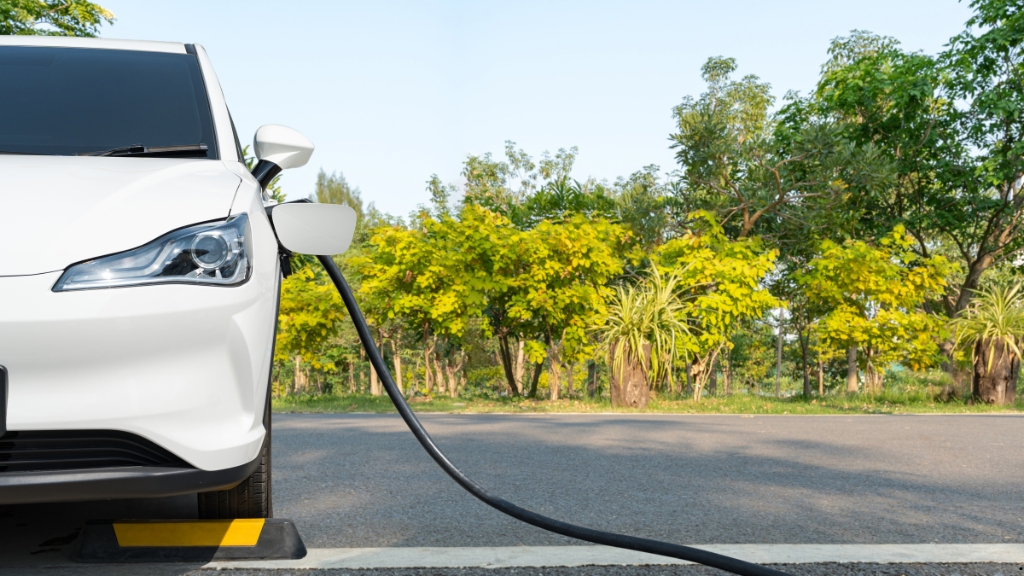Electric cars aren’t just a trend—they’re shaping the future of transportation. With advancements in technology and a global push for sustainability, it’s clear that electric vehicles (EVs) are here to stay. But what’s next for this rapidly evolving industry?
Over the next five years, I expect we’ll witness breakthroughs that could redefine how we think about driving. From longer battery ranges to faster charging times and smarter features, the possibilities seem endless. As governments and automakers ramp up their efforts, the road ahead for EVs looks more exciting than ever.
Whether you’re already an EV enthusiast or just curious about what’s coming, understanding these innovations can help you stay ahead of the curve. Let’s dive into what the future holds for electric cars and how these changes might impact our daily lives.
The Rise Of Electric Cars: A Quick Overview
Electric cars have transitioned from niche products to mainstream transportation solutions in the past decade. Global EV sales surpassed 10 million units in 2022, according to the International Energy Agency (IEA). This represents a significant 14% share of new vehicle sales, up from around 4% in 2020.
Governments worldwide are driving EV adoption by implementing policies like tax incentives, emissions targets, and bans on internal combustion engine (ICE) vehicles. For example, the European Union plans to phase out new ICE car sales by 2035. In the US, federal rebates of up to $7,500 support EV purchases.
Automakers are prioritizing EV production, further accelerating the shift. Major players like Tesla, Toyota, and Volkswagen are ramping up EV portfolios, with over 200 new models expected to launch by 2027. This rapid development addresses consumer demand for affordability, range, and diverse options.
Charging infrastructure is expanding steadily to meet growing EV usage. The number of public charging points globally exceeded 2.7 million in 2022, up 55% from 2021. Countries like China and the US are investing extensively to make EV charging more accessible.
These factors indicate that electric cars are not just a choice for environmentally conscious individuals but a key driver of the future transportation landscape.
Advances In Battery Technology
Battery technology developments are transforming electric vehicles, making them more practical and efficient. These innovations focus on enhancing energy density, longevity, and overall performance.
Solid-State Batteries
Solid-state batteries are emerging as a game-changing technology. They use solid electrolytes instead of liquid ones, resulting in higher energy density and improved safety. These batteries can store up to double the energy of traditional lithium-ion batteries, extending EV ranges significantly. Toyota, for example, plans to start producing vehicles with solid-state batteries as early as 2025. Additionally, they reduce the risk of overheating and eliminate flammability concerns due to their design. Widespread adoption may lower production costs and improve scalability, making EVs more accessible.
Improvements In Charging Speed And Efficiency
Faster and more efficient charging methods are crucial for widespread EV acceptance. Advancements in ultra-fast charging technology, like 800V systems, reduce charging times to under 20 minutes for a full battery. Companies like Tesla and Porsche are leading this space, implementing these developments into their latest models. Efforts to enhance efficiency, such as reducing energy loss and optimizing heat management, further improve battery performance. Wireless charging solutions are also making progress, allowing drivers to charge EVs seamlessly without physical connectors. These innovations support daily EV usability, reducing one of the primary consumer concerns.
Expanding EV Infrastructure
The rapid adoption of electric vehicles hinges on the growth and enhancement of EV infrastructure. Charging networks and integration with smart cities play essential roles in supporting this expansion.
Growth Of Charging Networks
Charging networks are expanding significantly to meet rising EV adoption. As of 2023, over 2.7 million public charging points exist globally, with forecasts suggesting this number will exceed 12 million by 2028. Governments and private companies are investing heavily to improve accessibility. For example, the US plans to install 500,000 public chargers by 2030 through its National Electric Vehicle Infrastructure (NEVI) program. Similarly, China’s policy-driven initiatives are increasing its network to support its position as the world’s largest EV market.
High-power charging stations are also growing. Options like 350 kW chargers reduce wait times, making EVs viable for longer trips. Companies such as Tesla, through its Supercharger network expansion, and Electrify America are central to these developments. The standardization of interfaces like the Combined Charging System (CCS) further ensures compatibility, simplifying experiences for drivers globally.
Integration With Smart Cities
Integrating charging infrastructure with smart cities optimizes EV adoption. Smart cities utilize Internet of Things (IoT) technology to manage real-time charging demand alongside power grid loads. For instance, vehicle-to-grid (V2G) systems allow EVs to store and supply energy, enhancing electricity stability. Cities like Amsterdam already employ these systems across public charging stations.
Integration also extends to multifunctional charging hubs. Some locations now feature renewable energy sources, such as solar-powered canopies, paired with battery storage systems. These hubs not only charge vehicles but also reduce reliance on fossil fuels. Urban planning increasingly incorporates EV charging solutions in parking lots, residential complexes, and workplaces, ensuring seamless accessibility for drivers.
Trends In Electric Car Design
Electric car design is undergoing rapid evolution, driven by technological innovation and sustainability goals. Over the next five years, key trends will reshape vehicle functionality, efficiency, and aesthetics.
Enhanced Autonomous Driving Features
Advancements in autonomous driving technology are integrating seamlessly with electric car platforms. I see manufacturers focusing on Level 4 and Level 5 automation, allowing vehicles to manage complex driving scenarios without human intervention in limited conditions. Advanced driver-assistance systems (ADAS), such as adaptive cruise control and lane-keeping assistance, are becoming standard across EVs. Companies like Tesla, Waymo, and GM are working on refining these technologies to improve safety and convenience. Enhanced sensor systems, including LiDAR and AI-powered cameras, enable real-time mapping and obstacle identification, pushing the boundaries of autonomy. Moreover, vehicle-to-everything (V2X) communication enhances situational awareness, particularly for fleet operations and shared mobility services.
Sustainable And Lightweight Materials
Sustainability is at the forefront of electric car design, with an emphasis on lightweight materials that increase energy efficiency. Automakers are adopting recycled and bio-based materials, such as hemp fibers and ocean plastic, for components like interiors and body panels. Aluminum and carbon fiber composites are replacing traditional steel to reduce vehicle weight and extend battery range. BMW, for example, is incorporating recycled materials into its i-series models, while Polestar uses sustainable materials like flax-based composites. Additionally, advancements in manufacturing processes—such as 3D printing with eco-friendly materials—lower waste and enhance design precision. I expect these material innovations to align electric cars with environmental goals while improving performance.
Policy And Market Influences
The electric vehicle (EV) landscape is being shaped by government interventions and the competitive strategies of automakers. Policies and market dynamics are accelerating the transition to cleaner transportation solutions.
Government Incentives And Policies
Governments worldwide are implementing measures to boost EV adoption. In the US, the Inflation Reduction Act includes tax credits of up to $7,500 for qualifying EV purchases, while the European Union enforces strict CO2 emission standards to encourage automaker compliance. In China, subsidies have supported a 13% annual growth in EV sales, with purchase incentives extended through 2027.
Several nations have also committed to phasing out internal combustion engine vehicles. Countries like the UK and Canada have pledged to ban new ICE car sales by 2030, aligning with global climate targets. Infrastructure investments, such as the European Union’s €1 billion allocation for cross-border fast charging stations, underscore the role of policy in scaling EV adoption and infrastructure.
Competition Among Automakers
Automakers are intensifying efforts to capture market share in the growing EV industry. Companies like Tesla continue to dominate, delivering over 1.3 million units in 2022, while traditional manufacturers like Ford, GM, and Volkswagen are ramping up EV production lines. Volkswagen plans to invest $180 billion through 2027 to develop diverse EV models and technologies.
Emerging players like Rivian and Lucid Motors are introducing high-performance and luxury EVs, focusing on niche segments. Meanwhile, partnerships between automakers, such as the collaboration between Honda and Sony to produce EVs by 2026, highlight the emphasis on innovation. This competitive landscape is driving advancements in affordability, performance, and design, transforming the market over the next five years.
Challenges To Overcome
Advancing electric vehicle technology is pivotal, but several challenges demand solutions to ensure widespread adoption and efficient integration into daily life.
Battery Recycling And Sustainability
Battery recycling remains a critical focus for minimizing environmental impact and addressing resource scarcity. Lithium-ion batteries currently dominate EVs, requiring substantial amounts of materials like cobalt, nickel, and lithium. Extracting these resources often involves environmentally damaging mining practices. Recycling initiatives aim to recover up to 95% of such materials, but current recycling infrastructure is insufficient to meet future demand. Companies like Redwood Materials and Li-Cycle are developing advanced recycling technologies to scale recovery processes.
Sustainability issues extend to the overall lifecycle of EV batteries. Developing second-use applications for batteries, such as grid storage solutions, ensures their continued utility after automotive use. Automakers, including Nissan and BMW, are implementing programs to integrate used EV batteries into renewable energy storage systems, enhancing sustainability efforts.
Addressing Range Anxiety
Range anxiety remains a key barrier for potential EV buyers, as concerns about limited battery range and charging station availability persist. Despite advancements, many EVs still offer ranges between 200-300 miles per charge, which some drivers find insufficient for long journeys. Expanding ultra-fast charging networks and improving battery efficiency can alleviate these concerns. Tesla’s Supercharger network and Electrify America’s initiatives provide an expanding charging framework.
Education about real-world range performance also plays a role in reducing anxiety. Features like real-time range estimations, factoring in terrain and weather conditions, provide transparency. Automotive software improvements, such as predictive battery management systems, further enhance driver confidence during long commutes or road trips.
Conclusion
The next five years promise to be transformative for the electric vehicle industry. With rapid advancements in technology, infrastructure, and sustainability efforts, EVs are on track to become an integral part of our daily lives. As governments, automakers, and innovators continue to push boundaries, the potential for electric cars to redefine transportation is undeniable.
Whether you’re an EV enthusiast or just starting to explore this space, staying informed about these developments will help you better understand how electric vehicles will shape the future of mobility. The road ahead is electric, and it’s an exciting journey to be part of.



